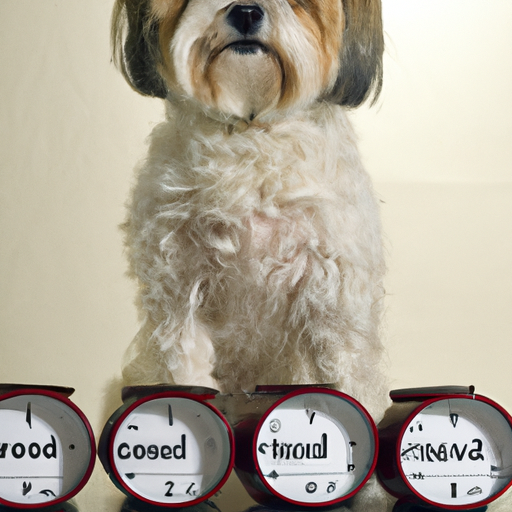Understanding Your Dog’s Nutritional Needs
As a caregiver, your top priority is ensuring that your dog is healthy and happy. This begins with understanding their dietary requirements. Dogs, like humans, need a balanced diet to maintain their overall health. However, your four-legged friends require different amounts of nutrients at different stages of life.
- Puppies: They often require more protein and fat for their growth and development.
- Adult Dogs: They might need less food, as their growth stage has passed, and the focus shifts to maintaining a healthy weight.
- Senior Dogs: They may have specific dietary needs depending on their health status.
Meeting your dog’s nutritional needs goes hand in hand with scheduling their meal times properly.
The Importance of Regular Feeding Schedules
Creating a consistent feeding schedule for your dog has multiple benefits. It helps regulate their digestive system, maintains their weight, and even assists in training them.
Here is a general feeding schedule guideline based on a dog’s age:
| Age of Dog | Feeding Times |
|---|---|
| Puppy (Under 6 months) | 3-4 times a day |
| Adult (6 months to 6 years) | 2 times a day |
| Senior (over 6 years) | 1-2 times a day |
Please note that these are general guidelines and will vary based on breed, size, and health condition of your dog. Always consult with your vet for the best feeding schedule.
Factors Affecting Feeding Times
The feeding times for your dog can be influenced by several factors:
- Your Dog’s Age and Health: As mentioned earlier, puppies need to eat more frequently than adult dogs. If your dog has a health condition, specific feeding times may be recommended by your vet.
- Your Schedule: Your daily routine also plays a significant role. Ideally, your dog should be fed at the same time every day.
- Type of Food: The type of food your dog eats also affects how often they should eat. Dry food, for instance, can be left out for the dog to eat at their own pace, while wet food should be eaten immediately.
Tips for Establishing a Feeding Routine
Establishing a feeding routine for your dog may seem daunting, but with a bit of patience and consistency, it can be done.
- Start by choosing specific meal times that work with your schedule.
- Be consistent. Dogs thrive on routine, so make sure you stick to the chosen feeding times.
- Avoid feeding your dog before vigorous exercise or immediately after to prevent bloating.
Frequently Asked Questions (FAQs)
Q: How often should I feed my dog?
A: It depends on their age, health, and the type of food they eat. Generally, puppies should be fed 3-4 times a day, adult dogs twice a day, and seniors 1-2 times a day.
Q: Can I leave dry food out for my dog to eat whenever they want?
A: While this is possible, it’s not ideal. It’s better to have specific feeding times to avoid overeating and obesity.
Q: What time should be the last meal of the day for my dog?
A: The last meal should ideally be a few hours before they sleep. This allows enough time for digestion and reduces the chance of overnight accidents.
Remember, every dog is unique. What works for one may not work for another. Always consult with a vet to establish the best feeding routine for your beloved canine companion.



